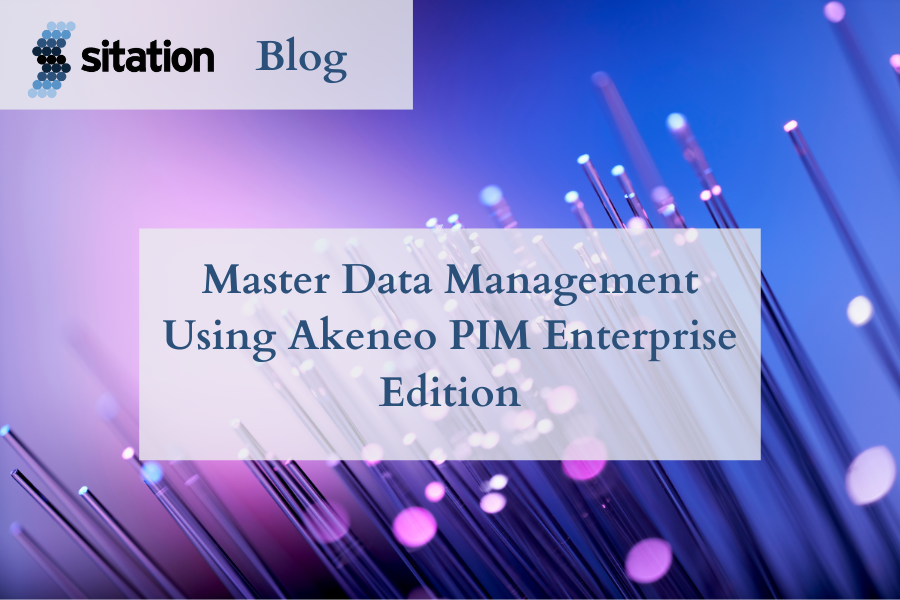Do you need to uniformly share a set of data domains, like codes with internationalized labels across your business organization? While Akeneo may not market Akeneo PIM as a master data management (MDM) system, the Akeneo PIM Enterprise Edition has the functionality you need to create, maintain, and disseminate domains of data for corporate wide use.
Why would you need a master set of data in the first place?
I started my career many years ago in a mainframe setting. Here, I implemented my first custom master data management system.
On the mainframe (1980s), we used the COBOL programming language and performed data file processing. There were no relational or document databases in use. A handful of hierarchal ones, like CODESYL, but for most applications, we simply used data files.
To combine the information from multiple data files into something meaningful to make the business more productive, we all (business and information technology personnel) agreed on a predetermined set of code values and labels, that we stored in separate files. These domain values were used when specifying the “same” value in multiple files.
Once we started using the same values, it was easy to combine the information in separate files to produce a report. Without the availability of these agreed upon code values, combining the data was difficult, if not impossible.
Fast forward to the client-server days (1990s), I implemented my second custom MDM.
Client-server applications at that time primarily used a relational database. In a single application, some of the tables we created in the database we appropriately called code tables, because we stored a domain of code values with labels in a single table.
This was a good start, but we ran into the same issue as years before, each application was using its own set of code values. So, we all (business and information technology personnel) agreed upon a predetermined set of code values and labels, this time storing them in code tables we could share between various applications. Once again, the issue of not combining data from different applications was solved.
Fast forward again, this time to the early web application days (2000s), I implemented my third custom MDM.
To make the code tables we created in the client-server age available to web-based applications, we wrapped our relational database’s code tables, with a web-based REST API layer, without the requirement for authentication. This allowed any web application to access the code tables.
What did I learn from my 40 years’ experience with master data management? The bulk of the work is getting all the business and technology personnel together, across the organization, to agree on a pre-determined set of values, domains, that will be used across the organization.
In comparison, the technology part, a system to create, maintain, and disseminate the agreed upon domains of values, is a small part of the equation.
That small part, in most cases, can easily be handled using Reference Entities, and/or Attribute Options in Akeneo PIM Enterprise Edition. Let’s take a look.
Reference Entities
Akeneo PIM’s Reference Entity functionality allows you to define a new entity, and its attributes. Once you’ve finished defining a new entity, you can create, read, update, and delete records for the new entity using the application.
You can also define the entity and its attributes, and create, read and update entity records using Akeneo PIM’s REST API.
Together, the combination of the application’s ability to maintain master data in the form of reference entities, and the ability disseminate that information using CSV and Excel file-based exports, and more importantly the REST API make the master data available to any application that can consume CSV, Excel, or JSON.
Further, you can define relationships between entities using a single or multi reference entity link attribute type, and/or between products and entities using a single of multi reference entity link attribute type in a product family.
If you have master data that is shared with product data, you have another option.
Attribute Options
Akeneo PIM has two product attribute types: simple or multi select that have a fixed domain of option values. These option values can be maintained through the application, via imports, using the REST API. And just like reference entities, the option values are accessible to other applications as CSV or Excel data files, or through the REST API as JSON.
Conclusion
If you’re looking to use the best product information management (PIM) system on the market, and also need master data management (MDM) capabilities, be sure to look into Akeneo PIM Enterprise Edition.
We at Sitation would love to have a conversation with you about your needs.
About The Author
Don Bales
Solution Architect, Sitation
An Information/Systems Architect, Business/Systems Analyst, Software Designer/Developer, and Author, Don Bales is fluent in both business and technology speak, performing the analysis, design, and programming of business solutions. With over thirty five years of experience solving business problems using technology and ample experience in Akeneo PIM installation, implementation, and integration, Bales shares his acquired knowledge through thought leadership publications and consulting. Additionally, Bales is the author of several books on Oracle and Java.




